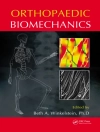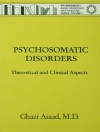This book describes and illustrates a variety of minimally invasive approaches to the thoracic spine, covering procedures applicable in not only degenerative diseases but also deformities and trauma. Surgery to the thoracic spine is demanding because of the surrounding ribs, lungs, heart, and large blood vessels and the challenges posed by the vulnerable spinal cord within a relatively small spinal canal. Consequently, postsurgical morbidity is often high. In this context, minimally invasive surgery offers significant benefits, but to date, comprehensive coverage in textbooks is lacking owing to the limited experience in the use of minimally invasive surgical techniques. This book will be ideal for all who are searching for clear guidance that is faithful to the established principles of spine surgery and evidence-based medicine. In addition to the comprehensive coverage of procedures appropriate in different pathologies, including thoracic disc herniation, ossification of the posterior longitudinal ligament, ossification of the ligamentum flavum, and stenosis, individual chapters address the transforaminal endoscopic approach, interventional treatment, intraoperative neuromonitoring, and navigation for thoracic spine surgery.
İçerik tablosu
1. Introduction.- A. Anatomical consideration of the thoracic spine.- B. Anesthetic consideration of the thoracic spine surgery.- C. Clinical presentation of the thoracic spinal compression.- 2. Thoracic disc herniation.- A. Transforaminal endoscopic approach with foraminoplasty.- B. Thoracoscopic approach.- C. Minithoracotomy and discectomy.- D. Minimally invasive Posterior approach.- 3. Ossification of the ligamentum flavum.- A. Microscopic decompression.- B. Endoscopic decompression.- 4. Ossification of the posterior longitudinal ligament.- A. Mini-Thoracotomy and OPLL resection.- B. Thoracoscopic approach.- C. Oblique paraspinal approach.- 5. Trauma.- A. Vertebroplasty and Kyphoplasty.- B. Minimally invasive reconstruction of vertebral body in Kummell’s disease.- C. Minithoracotomy and Corpectomy using Expandable cage.- 6. Arachnoid cyst.- A. Minimally invasive resection of thoracic arachnoid cyst.- 7. Tumor.- A. Minimally invasive resection of IDEM tumor.- B. Stereotactic Radiosurgery of thoracic spine.- 8. Deformity on the thoracic spine.- A. Adolescent Idiopathic Scoliosis.- B. Posttraumatic deformity.- C. Proximal Junctional Kyphosis.- 9. Interventional treatment.- A. CT and ultrasound guided block.- B. Epidural Neuroplasty.- 10. Intraoperative Neuromonitoring.- 11. Robotic surgery in thoracic spine.- 12. Navigation for thoracic spine surgery.
Yazar hakkında
Sang-Ho Lee, MD, Ph D Chairman, Wooridul Spine Hospital, Seoul, Korea Founder and Honorary President, World Congress of Minimally Invasive Spinal Surgery and Techniques Clinical professor of Anatomy, Yonsei University College of medicine
Junseok Bae, MD
President and Medical Director
Director, Wooridul International Minimally Invasive Spine Surgery Fellowship Program
Department of Neurological Surgery
Chungdam Wooridul Spine Hospital, Seoul, Korea
Sang-Hyep Jeon, MD
President and Medical Director
Department of Cardiovascular Surgery Busan Wooridul Spine Hospital, Busan, Korea












